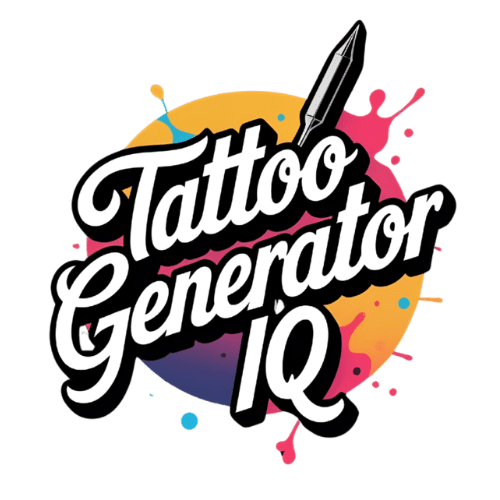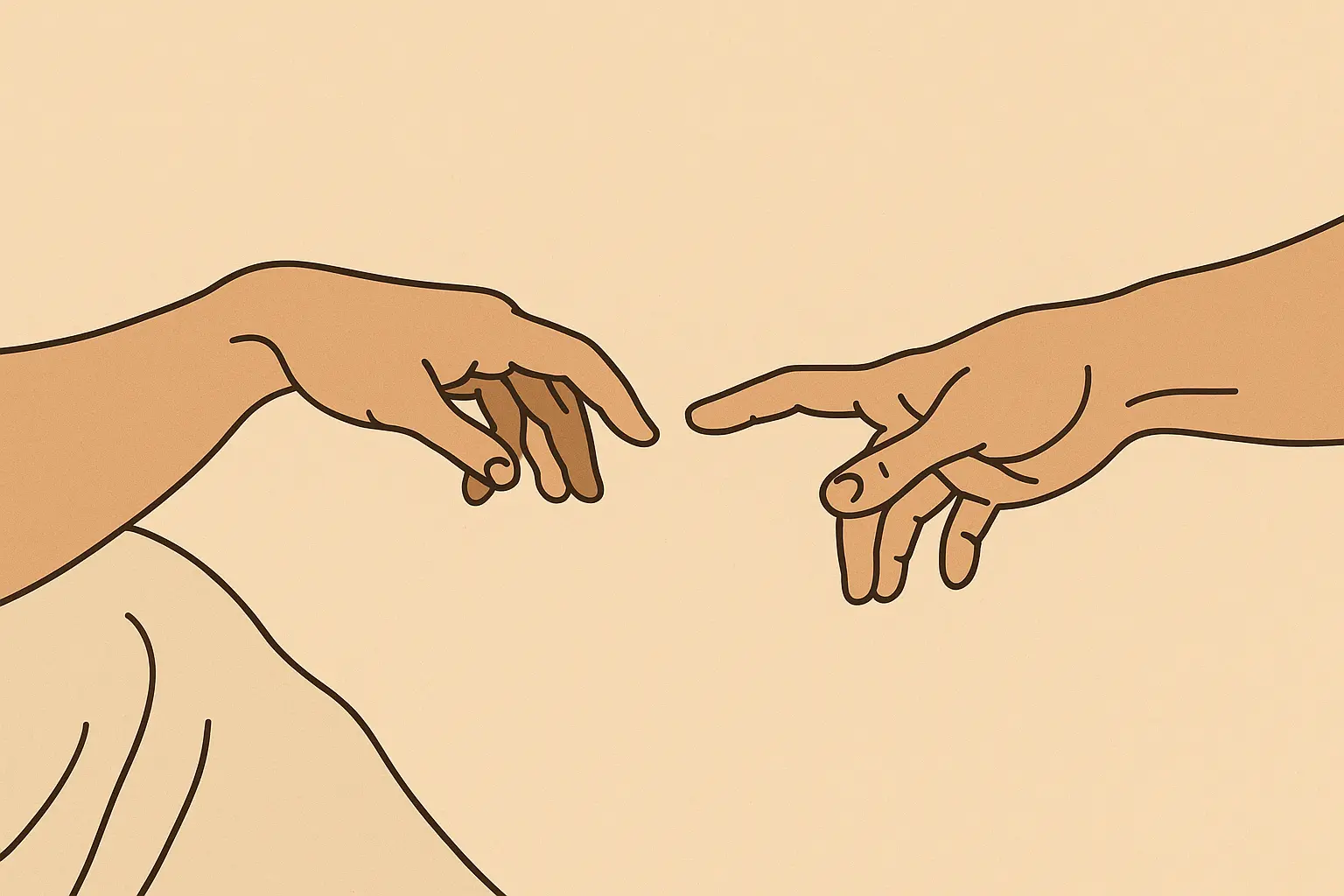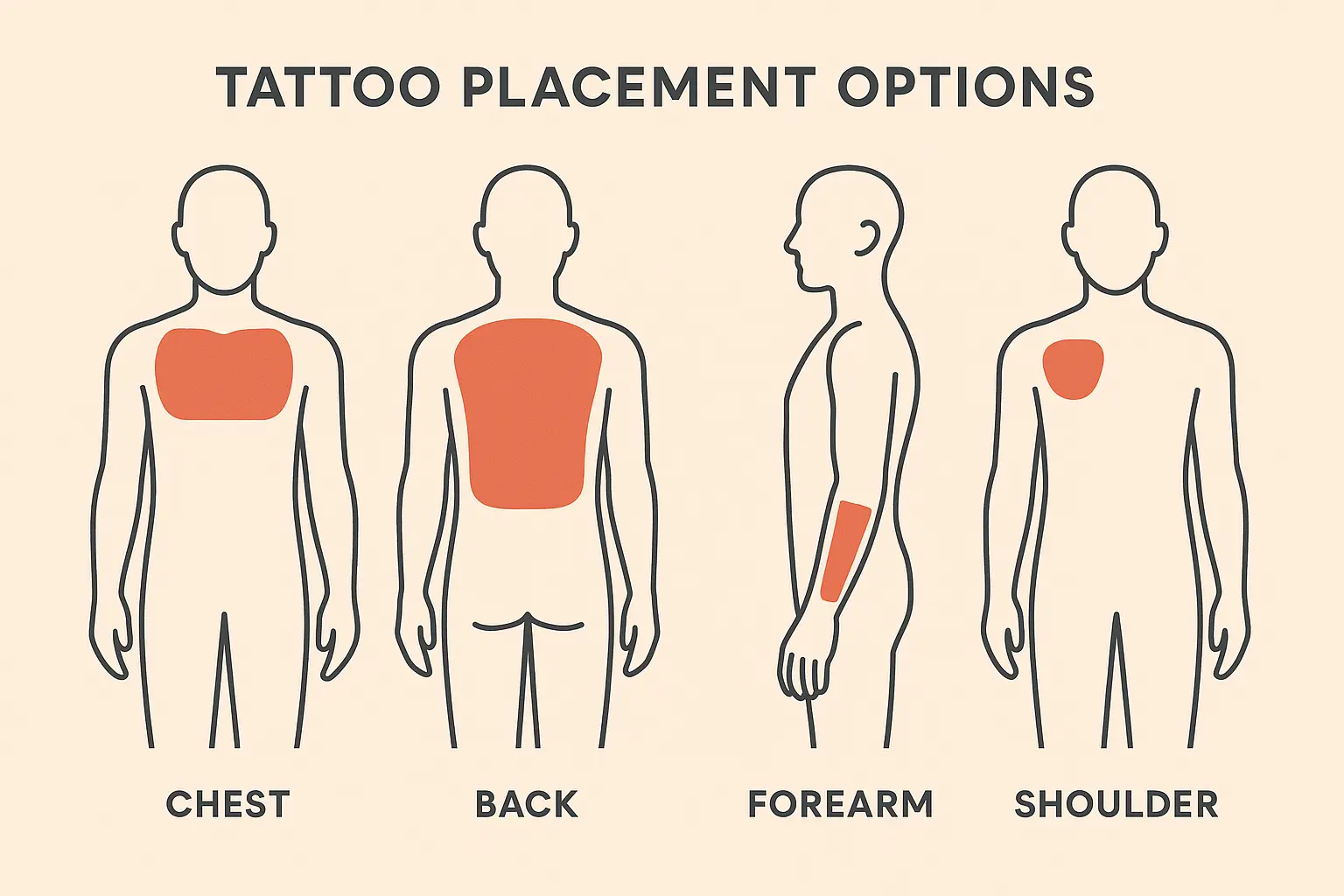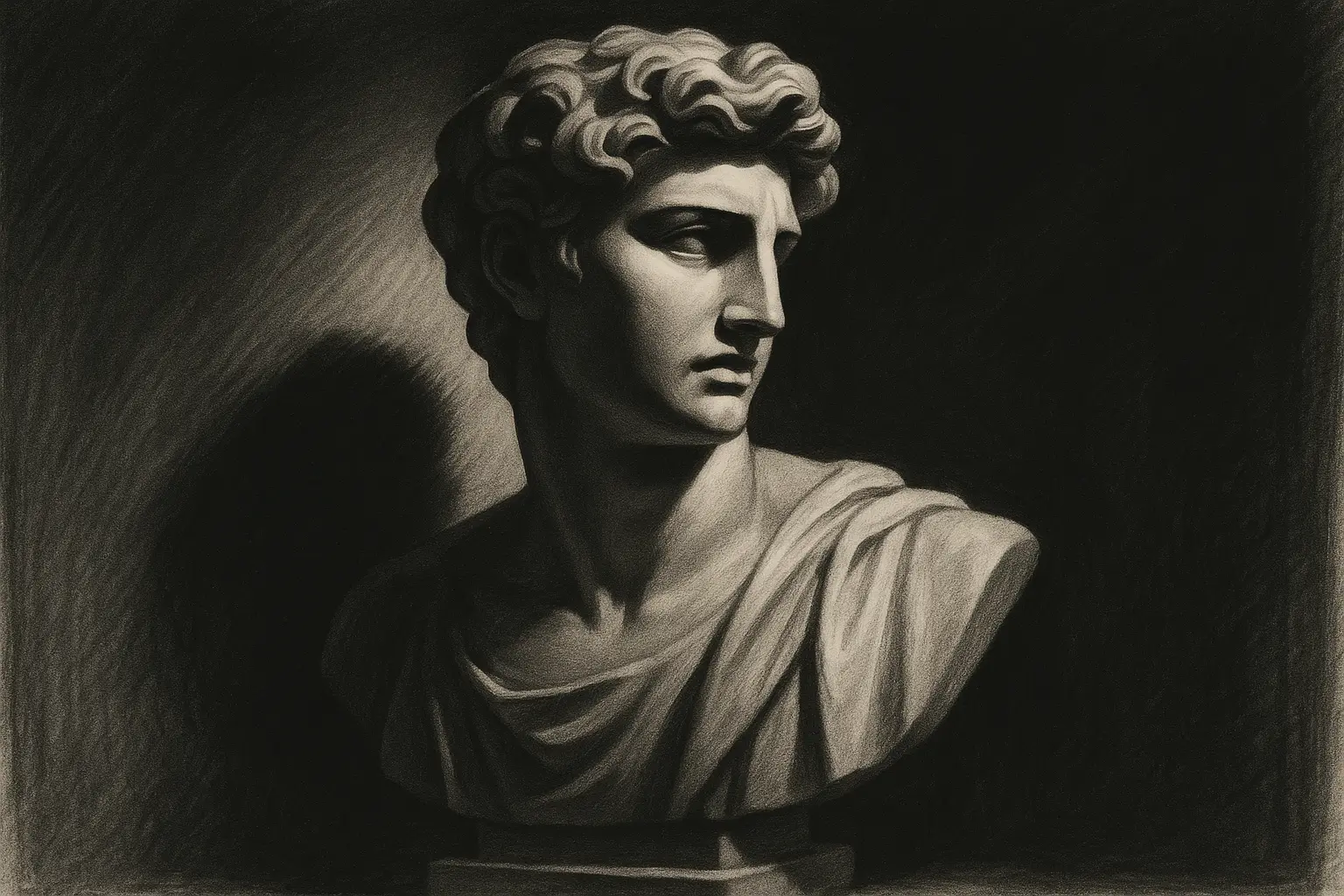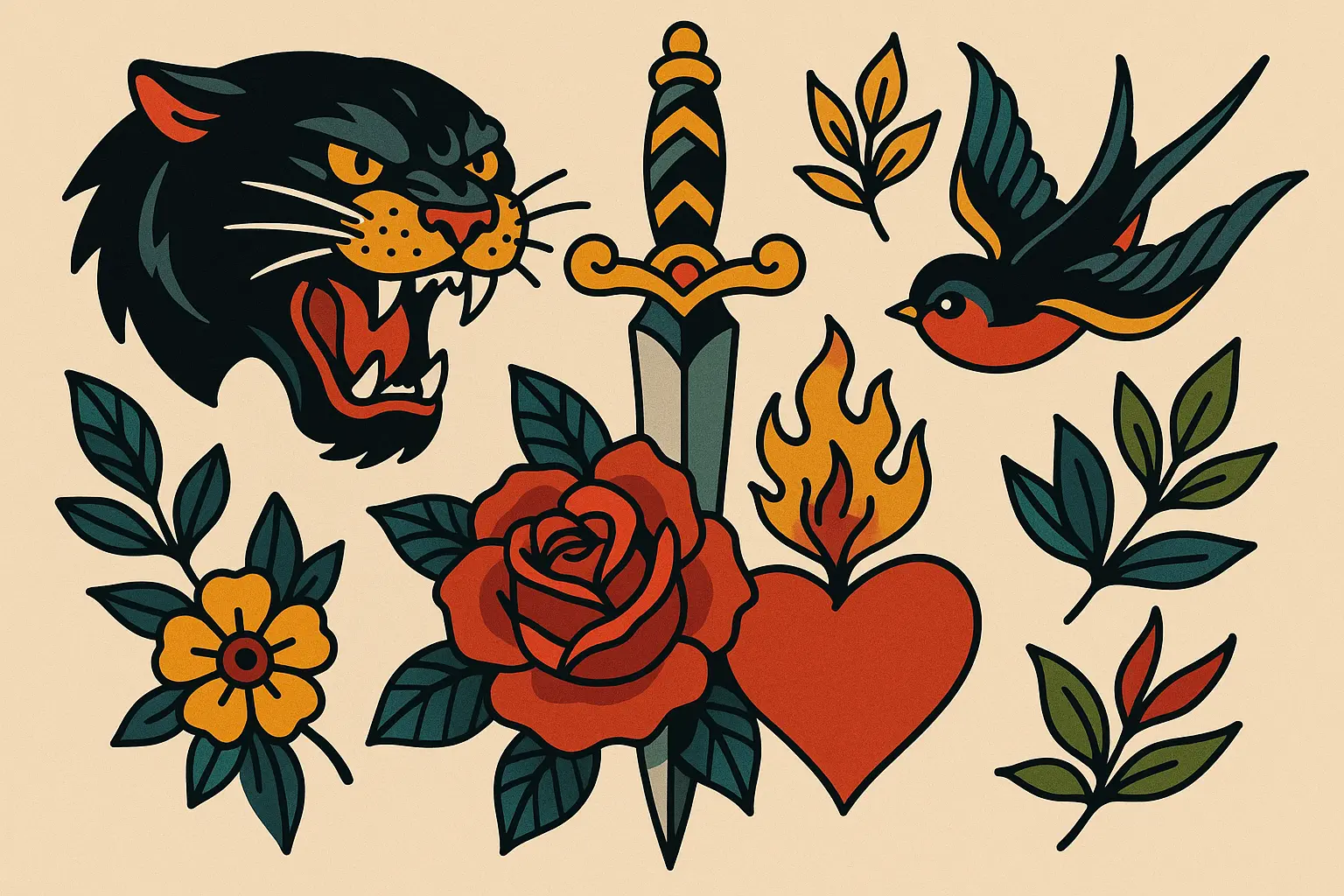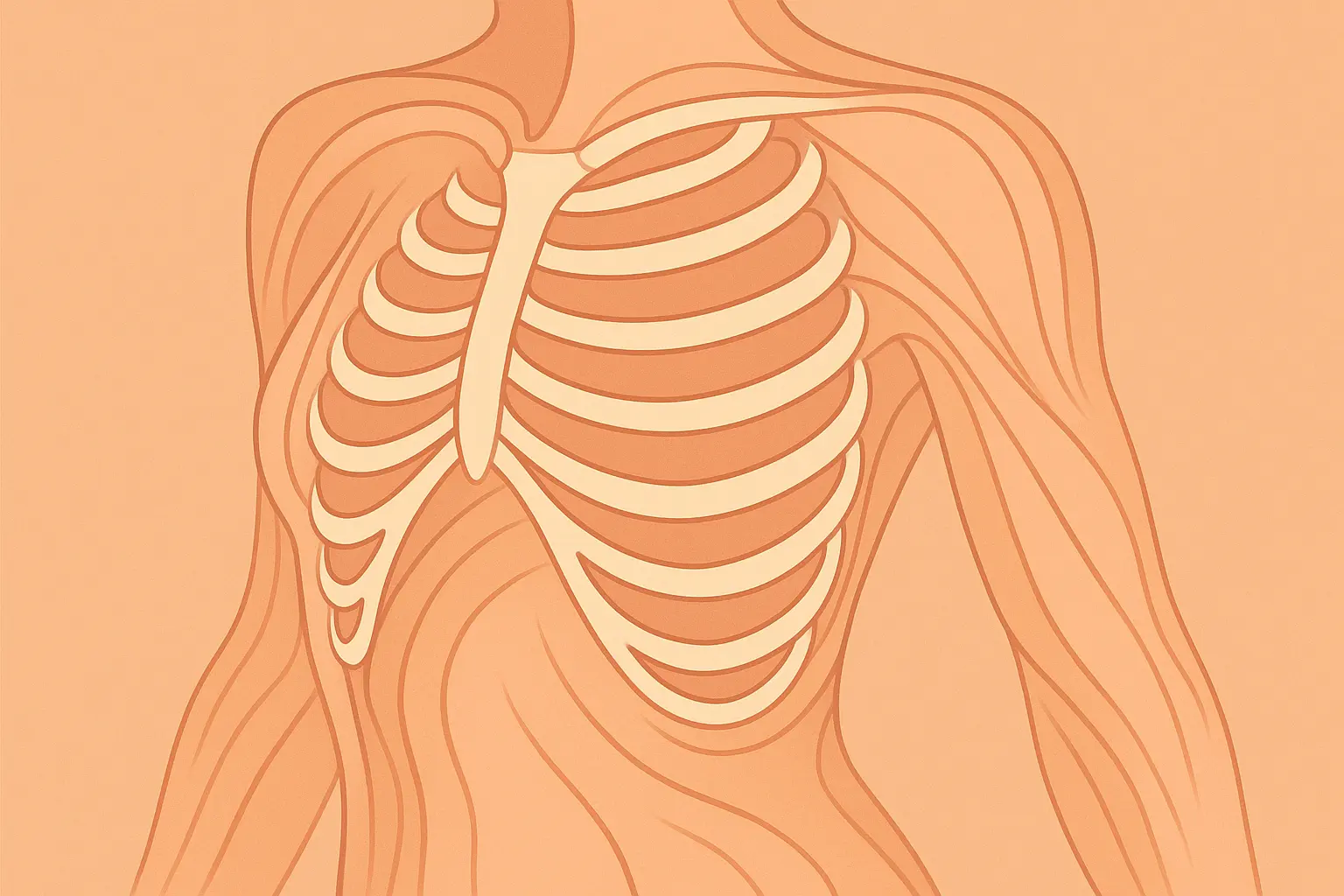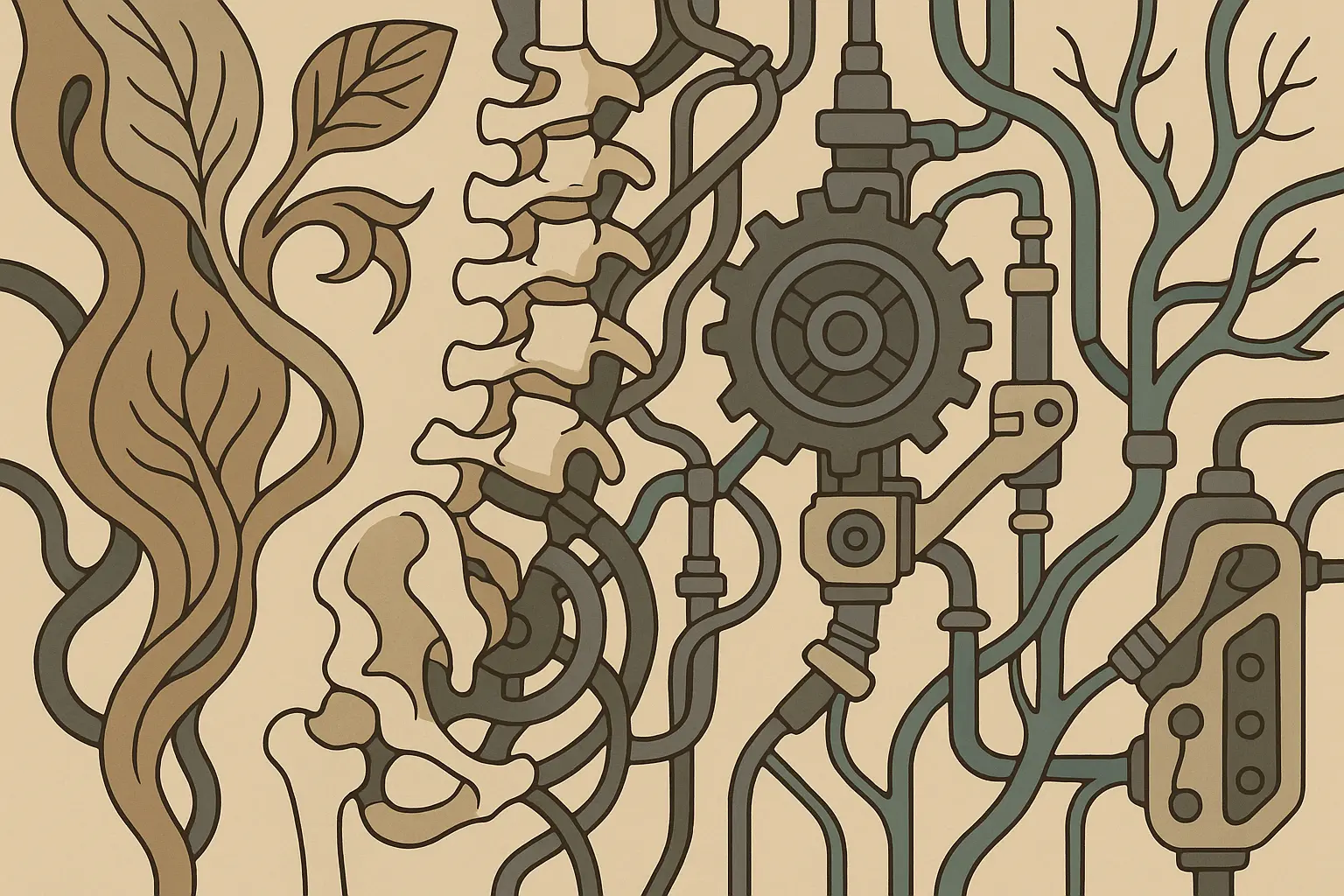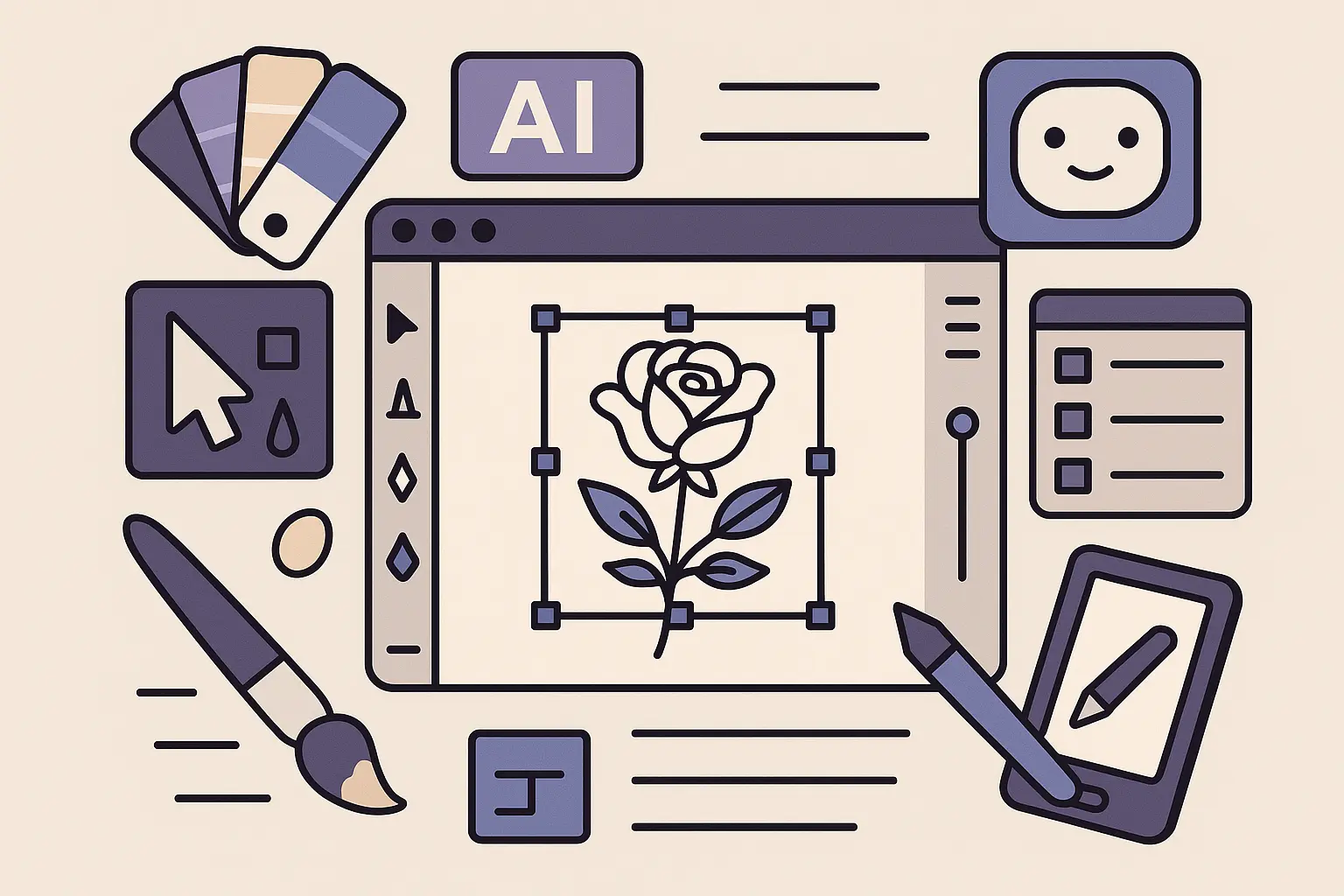25 Creation of Adam Tattoo Designs That Will Transform Your Body Into a Renaissance Masterpiece
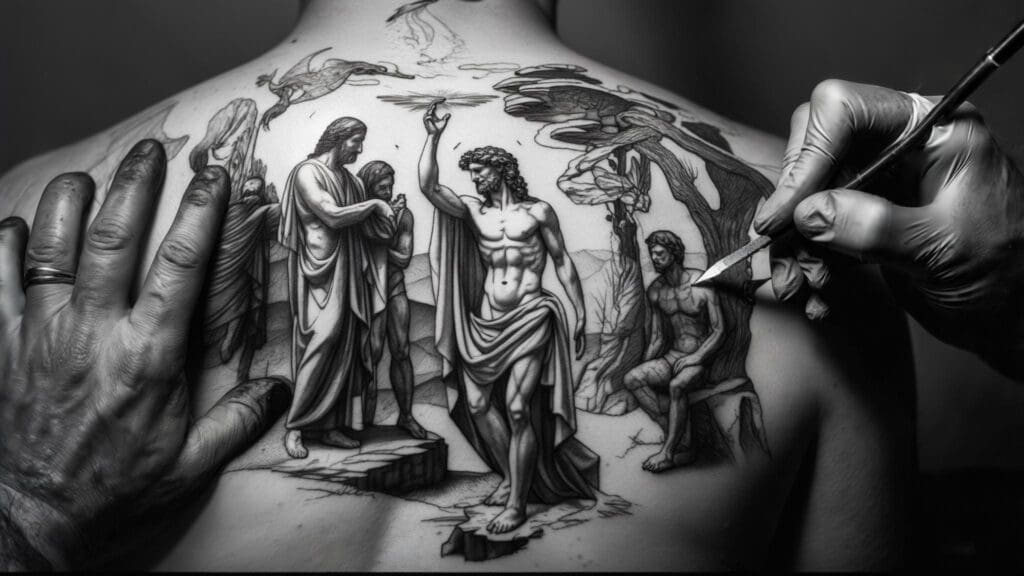
More and more people are getting Renaissance tattoos these days, with Creation of Adam tattoo designs leading this incredible art revival. I remember walking through the Sistine Chapel years ago, craning my neck to glimpse Michelangelo’s masterpiece, never imagining I’d one day help people transform this incredible artwork into personal body art. The timeless scene of God’s finger nearly touching Adam’s represents something profound – that moment of creation, connection, and divine spark that resonates deeply with anyone seeking meaningful tattoo art.
The iconic imagery speaks to our fundamental human desire for connection, whether spiritual, artistic, or personal. You’re carrying a piece of Renaissance history and spiritual symbolism that has moved people for over 500 years. Recent analysis shows that Creation of Adam tattoos represent life, connection, and divine inspiration, capturing the moment between the divine and human in permanent ink.
Table of Contents
-
Essential Considerations Before Getting Your Creation of Adam Tattoo
-
Traditional Realistic Reproductions (Designs 1-5)
-
Minimalist and Geometric Interpretations (Designs 6-9)
-
Hand-Focused Designs (Designs 10-13)
-
Stylized and Artistic Variations (Designs 14-17)
-
Placement-Specific Adaptations (Designs 18-21)
-
Contemporary and Fusion Styles (Designs 22-25)
-
Matching Your Design to Your Lifestyle and Spiritual Goals
-
How Tattoo Generator IQ Transforms Your Vision Into Reality
TL;DR
-
Creation of Adam tattoo designs range from highly detailed realistic reproductions requiring 15-20 hours to minimalist interpretations completed in 2-3 sessions
-
Size directly impacts detail retention – larger canvases preserve intricate elements while smaller designs focus on essential symbolic meaning
-
Placement considerations include professional visibility needs, healing conditions, and how the design flows with your body’s natural contours
-
Artist selection is crucial – realistic reproductions demand specialists in classical art and portraiture, while geometric styles require precision line work expertise
-
Be respectful of the religious meaning since this artwork carries deep spiritual significance for many people
-
Contemporary fusion styles blend classical imagery with modern elements like biomechanical details, cosmic backgrounds, or sacred geometry patterns
-
Hand-focused designs offer the most recognizable elements while maintaining manageable size and complexity
-
Long-term maintenance varies significantly between styles – bold, simple designs age better than intricate realistic details
Essential Considerations Before Getting Your Creation of Adam Tattoo
Look, before you fall head over heels for a Creation of Adam tattoo, let’s have an honest conversation. This isn’t just picking out a cool design – you’re making a decision that’ll be with you for decades. I’ve seen too many people rush into this without thinking through the real stuff that matters.
Choosing this design is way more than just loving how it looks. You’re basically signing up for something that’ll live on your skin forever, so let’s talk about what that actually means day-to-day.
Artistic Complexity and Your Commitment Level
Here’s the deal – Michelangelo’s original has crazy intricate details, flowing fabric, and facial expressions that’ll make even experienced tattoo artists sweat. If you want a highly detailed reproduction that captures every brushstroke, you’re looking at 15-25 hours in the chair. That’s not a weekend project, that’s a commitment.
And honestly? Your wallet’s going to feel it too. We’re talking $3,000-$8,000 for the full deal, and that’s assuming you find an artist who can actually pull it off.
Understanding tattoo pricing structures helps you budget appropriately for the complexity level you desire.
|
Design Complexity |
Time Investment |
Cost Range |
What You Actually Need |
How It’ll Look in 10 Years |
|---|---|---|---|---|
|
Full Scene Reproduction |
15-25 hours |
$3,000-$8,000 |
A master artist (seriously) |
Needs touch-ups |
|
Detailed Hand Focus |
8-12 hours |
$1,500-$3,500 |
Someone really good |
Pretty solid |
|
Minimalist Line Work |
3-6 hours |
$500-$1,200 |
Decent artist |
Still looks great |
|
Geometric Integration |
6-10 hours |
$1,000-$2,500 |
Advanced skills needed |
Ages like wine |
|
Portrait Studies |
4-8 hours |
$800-$2,000 |
Portrait specialist only |
Good with maintenance |
Now, if you’re thinking “maybe I should start simpler,” you’re probably right. Those minimalist versions? They often look better longer than the super detailed stuff. Plus, if it’s your first tattoo, jumping into a 20-hour masterpiece might be biting off more than you can chew.
Size and Placement Strategy
The original painting is horizontal, which creates some interesting challenges for your body. You can’t just slap it anywhere and expect it to work.
Take my client Sarah – she’s in marketing and needed something she could completely hide at work. She went with a 4-inch minimalist hand design on her shoulder blade. Smart move. She can wear normal business clothes with zero visibility, but when she’s at the beach or hanging out with friends, it’s a real conversation starter. Three years later, it still looks crisp and hasn’t needed any touch-ups.
But here’s what most people don’t think about – how will this look when you move? If you’re putting it on your ribs, every time you breathe or stretch, that design is going to shift. Your artist needs to plan for that, or you’ll end up with something that looks weird when you’re not standing perfectly still.
Being Respectful of the Religious Meaning
Can we talk about the elephant in the room? This is religious art. Like, really religious art. Some people are going to have opinions about you putting biblical scenes on your body.
I’m not saying don’t do it – just be ready for the conversations. Your grandmother might have thoughts. Random strangers might ask if you’re religious. Your coworkers might wonder. Just make sure you’re comfortable with whatever response you want to give, because trust me, people will ask.
And honestly? Make sure you actually connect with what this image represents. If you just think it looks cool but don’t really get the spiritual or artistic significance, maybe consider something else. This isn’t just decoration – it’s meaningful stuff for a lot of people.
Traditional Realistic Reproductions
Alright, let’s talk about going full Michelangelo. These are the tattoos that make people stop and stare, but they’re also the ones that’ll test your patience, pain tolerance, and bank account.
1. Full Scene Chest Piece
This is the holy grail – literally. We’re talking about turning your entire chest into the Sistine Chapel. Every angel, every fold of fabric, every subtle expression. It’s ambitious as hell, and honestly, not everyone should attempt it.
Your chest is actually perfect for this because it gives you that horizontal canvas that matches the original. But here’s what nobody tells you – you’re looking at 15-20 hours minimum, spread across multiple sessions. That’s months of your life, and your chest is going to be sore for a lot of it.
The good news? When it’s done right, it’s absolutely stunning. The bad news? “Done right” requires finding an artist who’s basically a Renaissance master with a tattoo machine. They exist, but they’re not cheap and they’re usually booked months out.
Professional concealment is easy with this placement – just wear a shirt. But when you take that shirt off at the pool or beach, prepare for some serious attention.
2. Back Panel Masterpiece
Your back is like having the biggest canvas possible. This is where you can really let an artist go wild with the full scene without having to worry about fitting it into weird body shapes.
The cool thing about back pieces is that they heal pretty well – good blood flow, flat surface, and you’re not constantly moving that area like you would your arms or legs. Plus, complete concealment for work situations.
But let’s be real – you can’t see your own back tattoo most of the time. Some people love that mystery, others want something they can actually look at. It’s totally a personal preference thing.
3. Realistic Hand Detail Focus
This is probably the sweet spot for most people. You get the most recognizable part of the whole scene without committing to a massive project.
My buddy Marcus spent six months researching artists before getting his hand detail on his forearm. Smart guy – he found someone who specialized in classical art and really understood anatomy. Took three sessions, about 12 hours total. Two years later, it still looks incredible and people recognize it immediately.
The forearm is great because you can show it off or hide it depending on what you’re wearing. And at 6-8 inches, you can get enough detail to make it really impressive without going overboard.
4. Portrait-Style Face Studies
Michelangelo was a genius at faces – God’s commanding presence, Adam’s awakening expression. These portrait studies let you focus on those incredible expressions.
But here’s the thing – portrait tattoos are hard. Like, really hard. If your artist can’t nail facial expressions on paper, they definitely can’t do it on skin. Ask to see healed portrait work in their portfolio, not just fresh stuff.
These work great on upper arms or as part of a larger religious sleeve. Just make sure whoever you choose actually specializes in portraits, because a bad face tattoo is… well, it’s bad.
5. Classical Shading Technique
This is for the purists – all about that black and gray work that captures Michelangelo’s incredible use of light and shadow.
The beautiful thing about this approach is that it ages incredibly well. No color to fade, just solid technique that’ll look good for decades. It’s timeless in the best way.
Your artist needs to really understand classical shading methods though. This isn’t your typical tattoo shading – it’s recreating Renaissance techniques in ink. Find someone who gets that difference.
Minimalist and Geometric Interpretations
Sometimes less really is more. These designs strip away all the complex details but keep the powerful meaning. Plus, they age like fine wine and won’t break the bank.
These simplified approaches align perfectly with beginner-friendly tattoo concepts that prioritize longevity and meaning over complexity.
6. Single Line Hand Reaching
There’s something beautiful about reducing that entire complex scene down to just flowing lines. One continuous line that captures the essence of divine connection without any unnecessary stuff.
This is perfect for people who want something meaningful but subtle. It ages beautifully, won’t fade into a muddy mess, and you can put it almost anywhere on your body.
The trick is finding an artist who can capture the essence with so few elements. It’s harder than it looks to make simple work effectively.
7. Geometric Sacred Geometry Integration
This is where things get really interesting – combining the classical imagery with sacred geometry patterns. You’re basically bridging different spiritual traditions and creating something unique.
Think Flower of Life patterns with the reaching hands as the focal point, or Metatron’s Cube frameworks. It appeals to people who are into both classical art and more universal spiritual concepts.
Your artist needs to be good at both realistic work and precise geometric construction. It’s a specific skill set, but when done right, it’s stunning.
8. Minimalist Silhouette Design
Bold, simple shapes that everyone will recognize instantly. No getting lost in tiny details that might blur over time.
These work great small – wrists, ankles, behind ears. You get all the symbolic power in a package that’s easy to live with long-term.
The key is finding an artist who understands that simple doesn’t mean easy. Good silhouette work requires strong composition skills.
9. Abstract Line Work Interpretation
This is for people who appreciate modern art but want that connection to classical themes. Flowing lines that suggest the movement and emotion without literal reproduction.
It’s personal interpretation territory, which means it can evolve with your understanding over time. The abstract nature lets you find your own meaning in it.
Success depends on your artist’s ability to create emotional impact through suggestion rather than detailed reproduction. It’s a different skill set entirely.
Hand-Focused Designs
The hands are the money shot – the part everyone recognizes immediately. These designs give you maximum impact with manageable commitment.
Hand placement requires careful consideration of pain levels and healing characteristics unique to this sensitive area.
10. Creation of Adam Hand Tattoo – Detailed Reproduction
This is the classic choice. Those reaching hands with all the anatomical detail and subtle positioning that makes the original so powerful.
Forearm placement is popular because it flows with your natural arm movement. When you reach for something, you’re literally recreating part of the scene. Pretty cool interactive element.
You need an artist who really understands anatomy and can capture that tension in the almost-touching fingers. That’s where all the drama lives.
11. Adam Hands Tattoo – Mirrored Placement
This is getting creative – putting one hand reaching up toward the divine, the other in Adam’s relaxed position. It requires serious planning to make sure it looks right when you move naturally.
The interactive element is amazing though. Every gesture becomes part of the artwork. Just make sure your artist understands how hands actually move and position the tattoos accordingly.
12. Finger Touch Detail
The extreme close-up of that almost-touch. It’s tiny but incredibly powerful – all that tension and meaning packed into a small space.
Small size means every line has to be perfect. No room for error or sloppy work. But when done right, it creates immediate recognition and emotional response.
13. Hand Placement with Personal Elements
This is where you make it uniquely yours. Adding names, dates, or personal symbols without compromising the classical power.
My friend Jennifer incorporated her kids’ birth dates in Roman numerals along the wrists. Subtle enough not to compete with the main design, but meaningful enough to make it deeply personal.
The key is integration that feels natural, not forced. Your artist needs to understand both classical composition and creative customization.
Stylized and Artistic Variations
Ready to get creative? These approaches take the classical scene and run it through different artistic filters.
14. Watercolor Creation Scene
Imagine the scene painted with flowing watercolors – blues, purples, flesh tones bleeding into each other. It’s ethereal and contemporary while keeping the classical figures recognizable.
Fair warning though – watercolor tattoos are maintenance-heavy. The flowing colors look incredible fresh, but they need touch-ups more often than simpler work. Make sure you’re ready for that commitment.
Not every artist can pull off convincing watercolor effects. Do your homework and find someone with a solid watercolor portfolio.
15. Neo-Traditional Bold Lines
This bridges classical art with modern tattoo culture. Bold outlines, simplified shading, enhanced colors. It pops visually while aging well.
The bold approach means excellent longevity – these tattoos look good for decades. Plus, the enhanced colors create immediate visual impact that photographs well.
Your artist needs expertise in traditional tattoo techniques plus understanding of classical art. It’s about adapting, not just copying.
16. Sketch-Style Artistic Interpretation
This celebrates the artistic process itself – like seeing Michelangelo’s preparatory sketches. Unfinished edges, visible construction lines, varying line weights.
Appeals to people who love the creative process as much as finished results. It’s a unique aesthetic that stands apart from typical tattoo approaches.
Authentic sketch quality requires understanding classical drawing methods. Your artist needs to make “unfinished” look intentional, not sloppy.
17. Surreal Modern Adaptation
Adding surreal elements creates dialogue between classical and contemporary art. Floating geometric shapes, impossible architecture, dreamlike distortions.
This appeals to people who appreciate both classical art and modern surrealism. It’s conversation-starter territory that demonstrates artistic sophistication.
High artistic vision is essential. Your artist needs understanding of both classical composition and surreal principles to make it work seamlessly.
Placement-Specific Adaptations
Different body parts need different approaches. Here’s what actually works where.
Different body placements have varying pain tolerance requirements that influence your design choices and session planning.
|
Placement Location |
Canvas Size |
Concealment Level |
Pain Level |
Healing Conditions |
Best Design Types |
|---|---|---|---|---|---|
|
Thigh |
Large (8-14 inches) |
Excellent |
Moderate |
Optimal |
Full scenes, detailed work |
|
Ribcage |
Medium-Large (6-12 inches) |
Good |
High |
Challenging |
Curved adaptations |
|
Shoulder Cap |
Medium (5-9 inches) |
Variable |
Moderate |
Good |
3D wrapping designs |
|
Forearm |
Medium (4-8 inches) |
Variable |
Low-Moderate |
Excellent |
Hand focus, sleeve elements |
|
Back |
Extra Large (10-20 inches) |
Excellent |
Moderate-High |
Good |
Complete reproductions |
18. Creation of Adam Thigh Tattoo – Vertical Composition
Thighs are amazing canvases – large, easy to conceal, heal well. Perfect for detailed work that needs space to breathe.
The vertical composition requires rearranging the horizontal original, which takes real artistic skill. But when done right, you get museum-quality work that’s completely hideable for professional situations.
Significant time investment, but the results can be incredible. This is for people ready to commit to a major tattoo project.
19. Ribcage Curved Adaptation
Ribs are tricky – the design has to work with your body’s natural curves and movement. Every breath changes how it looks.
The curved canvas creates cool three-dimensional effects, but it requires an artist who really understands anatomy and movement. Plus, ribs hurt. A lot.
Great concealment, dramatic impact when revealed. Just be ready for some serious discomfort during the process.
20. Shoulder Cap Integration
Shoulders create amazing three-dimensional effects as the design wraps around your arm. The hands can flow from front to back, changing with your movement.
Excellent visibility control – tank tops show it off, regular shirts hide it completely. Perfect for people who need professional flexibility.
Requires understanding of how imagery translates across curved surfaces. Not every artist gets this right.
21. Forearm Sleeve Element
This works great as part of a larger sleeve concept. The Creation hands become focal points within bigger artistic narratives.
Long-term planning is crucial for successful sleeve development. The hands need to work with whatever else you add later.
Major investment territory – sleeves develop over months or years. Make sure you’re ready for that journey.
Contemporary and Fusion Styles
Want to get really creative? These fusion approaches blend classical imagery with contemporary concepts.
Contemporary fusion approaches often incorporate elements from spiritual tattoo traditions that complement the religious themes of the original artwork.
22. Biomechanical Fusion Design
Picture God’s hand emerging from intricate mechanical components while Adam’s hand gradually transforms from flesh to machine. It’s commentary on modern creation myths and our relationship with technology.
Appeals to sci-fi lovers and people interested in philosophical questions about human enhancement and AI. Creates unique artistic statements.
Requires expertise in both classical art and biomechanical styles. Your artist needs skills in realistic portraiture and mechanical detail work.
23. Galaxy and Space Integration
Cosmic backgrounds expand the creation story to universal scales. Stars, nebulae, swirling galaxies as backdrop for the intimate scene.
Perfect for people who appreciate both spiritual themes and scientific wonder. Bridges religious and scientific worldviews beautifully.
Complex color work and multiple artistic elements mean significant time investment and premium expertise required.
24. Mandala and Sacred Geometry Fusion
Eastern and Western spiritual traditions coming together. The Creation hands become focal points within intricate mandala patterns.
Appeals to people with diverse spiritual interests. Creates meaning that transcends specific religious boundaries.
Requires understanding of both classical Western art and Eastern spiritual symbolism for authentic execution.
25. Modern Minimalist Architecture
Clean architectural lines and geometric forms provide contemporary context for the timeless gesture. Ancient spiritual themes meet modern urban experience.
Perfect for people who appreciate both classical art and modern design. Shows how timeless themes remain relevant in contemporary culture.
Requires artistic vision for successful style integration without conflicts between classical and contemporary elements.
Matching Your Design to Your Lifestyle and Spiritual Goals
Let’s get practical about how this tattoo fits into your actual life.
Consider how your chosen design aligns with meaningful tattoo concepts that reflect your personal values and life philosophy.
Professional and Social Considerations
Corporate job? You probably want something easily concealed. Thigh, back, or ribcage placements give you impressive art without career complications.
Creative field? Visible placement might actually enhance your professional identity. Forearm and shoulder tattoos can be conversation starters and demonstrate artistic appreciation.
|
Your Life Situation |
What Works Best |
Where to Put It |
Real Talk |
|---|---|---|---|
|
Corporate Professional |
Simple, hidden designs |
Back, Thigh, Ribs |
Play it safe |
|
Creative Professional |
Whatever you want |
Anywhere visible |
Express yourself |
|
Religious/Spiritual |
Traditional, respectful |
Personal preference |
Honor the meaning |
|
Active/Athletic |
Bold, simple designs |
Areas that don’t stretch much |
Think durability |
|
First tattoo |
Start manageable |
Moderate size areas |
Don’t go crazy |
Spiritual Connection and Personal Meaning
Strong religious connection? Traditional realistic reproductions show respect for both spiritual and artistic traditions while creating meaningful personal expression of faith.
More general spiritual interests? Fusion designs with diverse symbolic elements might reflect your personal journey better. Mandala integration, sacred geometry, or cosmic themes create personalized interpretations.
Artistic Appreciation and Cultural Understanding
Art history buff? You probably want something that shows you really understand Michelangelo’s techniques and what made him revolutionary. Traditional reproductions and classical shading approaches demonstrate that deep appreciation.
More into contemporary art? Stylized versions that play with modern artistic movements might be your thing. Watercolor, neo-traditional, or surreal adaptations show you get both the historical significance and how art evolves.
The bottom line is this – make sure your choice actually reflects who you are and what matters to you. Don’t get something just because it looks cool on Instagram.
How Tattoo Generator IQ Transforms Your Vision Into Reality
Look, I get it – trying to explain your vision to a tattoo artist can be frustrating. You’ve got this perfect image in your head, but when you try to describe it, something gets lost in translation. That’s where Tattoo Generator IQ comes in handy.
Instead of playing charades with your tattoo artist, you can actually show them exactly what you’re thinking. Our AI understands both the technical stuff that makes tattoos work and the cultural weight of Michelangelo’s masterpiece.
Here’s What Actually Happens:
You tell our system what style appeals to you – maybe you’re drawn to that minimalist line work, or you’re thinking about a biomechanical fusion thing. The AI generates variations that actually make sense for tattooing, not just pretty pictures that won’t translate to skin.
Placement Reality Check:
Ever wonder how that design would actually look on your forearm versus your thigh? Our platform shows you realistic previews that consider how your body actually works. No more guessing whether the proportions will look weird when you move.
Artist Communication Made Easy:
Instead of walking into a shop with a Pinterest screenshot and hoping for the best, you get professional-quality references with technical specs. Line weights, shading approaches, color palettes – everything your artist needs to understand exactly what you want.
The best part? You can experiment with different approaches without committing to anything. Try the watercolor version, then look at the geometric interpretation, then see how a minimalist approach might work. Figure out what actually speaks to you before you sit in that chair.
Real Talk About the Process:
This isn’t about replacing the human connection with your tattoo artist – it’s about making that conversation more productive. When you walk in with clear, detailed references, your artist can focus on execution instead of trying to read your mind.
Plus, good artists actually appreciate clients who’ve done their homework. It shows you’re serious about the process and understand what you’re asking for.
Ready to stop playing guessing games with your tattoo design? Tattoo Generator IQ takes the uncertainty out of the process so you can focus on finding the right artist and getting excited about your new ink.
Final Thoughts
Here’s the thing – getting a Creation of Adam tattoo isn’t just about having cool body art. You’re connecting yourself to something that’s been moving people for over 500 years. That’s pretty incredible when you think about it.
But don’t let that weight scare you off. Whether you go with a full realistic reproduction or a simple minimalist interpretation, what matters most is that it means something to you. I’ve seen people get emotional over tiny finger-touch tattoos and others who treat their massive back pieces like casual decoration. Both approaches are totally valid.
The key is being honest with yourself about what you actually want and need. Are you ready for 20 hours in the tattoo chair, or would you rather start with something manageable? Do you need complete concealment for work, or can you rock visible ink? Are you prepared for the conversations this will spark?
Take your time with this decision. Yeah, I know everyone says that, but seriously – this is going on your body permanently. Research artists thoroughly. Look at healed work, not just fresh photos. Ask about their experience with classical art. Don’t just pick someone because they’re cheap or available next week.
And remember, a good artist will be honest with you about what will and won’t work. If they’re promising you incredible detail in a tiny space, or telling you everything you want to hear without asking practical questions, that’s a red flag.
The Creation of Adam has survived for centuries because it captures something fundamental about being human – that desire for connection, meaning, and something bigger than ourselves. When you carry that imagery on your skin, you’re joining a conversation that’s been going on for generations.
Just make sure you’re adding your voice to it thoughtfully. Do your research, find the right artist, choose a design that actually fits your life, and you’ll end up with something you’ll love for decades.
And hey, if people ask about the religious significance (and they will), just be ready with whatever answer feels right to you. It’s your tattoo, your meaning, your story to tell.
